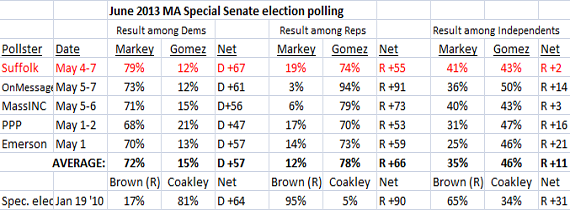 |
| Public Policy Polling stands out among polling firms for their partisan, often times combative nature. |
In the Virginia Governor poll released by PPP yesterday, and referenced by this blog, there was an easily missed statistic regarding the job approval rating for Virginia's Governor. According to the Democratic leaning pollster, Bob McDonnell (R) is above water with Virginia voters, but only somewhat:
Do you approve or disapprove of Gov. Bob McDonnell's job performance? (May 24-26, 2014; 672 Virginia voters, 3.8% MoE)
Approve - 44%
Disapprove - 37%
Not Sure - 19%
This finding represents a net 6 point deterioration in approval for McDonnell's job performance since PPP's last poll in January (48/35%), and represents their lowest net rating for the Governor since July of 2012. But more significantly, the above finding represents a fairly significant departure from every other pollster to test the Virginia Governor's job approval this year, or even since taking office in 2010.
Just consider Quinnipiac University, which released a survey on Bob McDonnell's job approval rating less than two weeks before PPP. They found McDonnell's overall net job approval rating to be 3 TIMES higher than PPP (49/28% vs. 44/37%), while his rating among whites was DOUBLE PPP's finding (50/29% vs. 48/36%). Meanwhile, there's an astounding 30 point spread between Independents' views on Gov. McDonnell's job performance (54/27% per Quinnipiac, and 39/41% per PPP).
But there's no need to stop at Quinnipiac. Just 3 weeks ago, the Washington Post released a survey showing McDonnell with a net job approval rating 5 TIMES higher than PPP just found. And the same week, NBC/Marist found the same thing, as the chart below of McDonnell's job approval rating since the start of this year notes:
McDonnell's lowest rating this year besides PPP's most recent survey came in January, when he hit 48/35%, from none other than....PPP. Every other polling firm this year has found McDonnell between +21 and +37 in terms of net job approval/disapproval.
And the outlier-nature of PPP's Virginia Governor job ratings doesn't end with just this year:
































